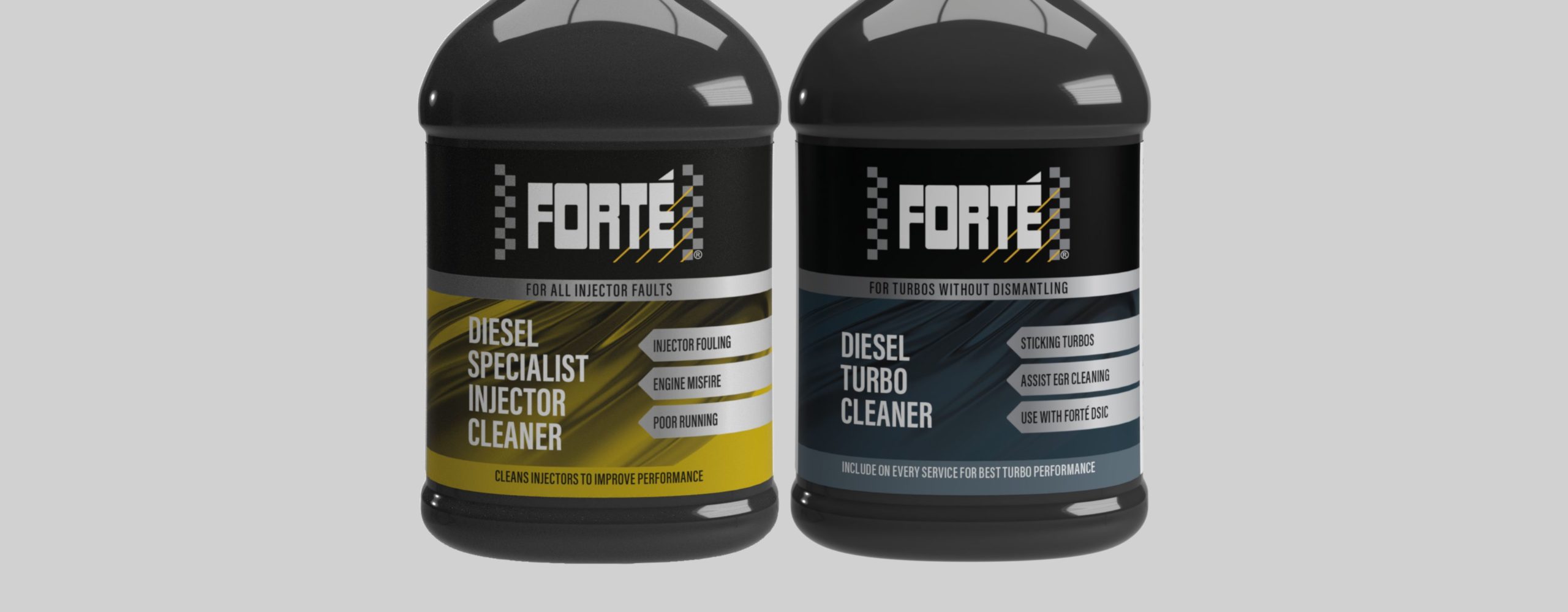Forté Technical Tips – What to do when it comes to turbocharger cleaning and restoring
With manufacturers being given stricter guidelines on improving engine efficiency and lowering emissions, engineers have had to innovate when it comes to turbocharger cleaning and restoring. Join us as we take a closer look at turbocharger issues, failures and maintenance so you can satisfy your customers.
What is a turbocharger?
One of the ways engineers are trying to overcome the stricter guidelines is by achieving turbo charging. A turbo in its purest form is a centrifugal compressor driven by the exhaust. Turbo’s use exhaust gas as an energy source to drive a turbine wheel; the theory being to harness and reuse energy already present. The turbo force feeds the engine with more air than it can normally digest with the result being an engine being able to produce more power than its normally aspirated counterpart.
There are two sides to all turbocharger cleaners, the turbine wheel driven by exhaust gas, which is then connected directly by a shaft to the compressor wheel on the opposite side within the air intake system. The compressor wheel driven by the turbine wheel draws in ambient air, which is then compressed into the cylinders of the engine, increasing its density and the amount of air for combustion resulting in increased power output. This is commonly known as ‘forced-induction.’
Common issues with turbocharged engines
A common issue with turbocharged engines is ‘lag’. Turbo lag is the slow throttle response due to the time taken for the exhaust system and turbocharger to generate the required boost levels for the engine to respond.
Variable Vane technology is the latest generation in turbo design. It’s undertaking to vary boost according to engine speed. Vanes are used within the turbocharger to direct exhaust gas to the turbine. The result of this is to be able to control the flow of exhaust gas within the turbine, which increases levels of boost at low engine speed, as well as a maintained consistent level of boost throughout the entire rev range. Opening the vanes directs exhaust gas to the turbine making it spin faster. The vanes operate to provide the correct turbo assistance for real time engine demands.
What causes turbo failure?
The most common cause of turbo failure is traced directly to two areas.
- Poor lubrication
- Sticking vanes
Bearings within a typical turbo depend on a constant flow of clean oil to function correctly. So any breakdown within an engine’s oil system will impact the turbocharger cleaning. Oil breakdown occurs naturally through age and type of use. However this can be exacerbated through lack of maintenance, use of improper grade oil, and severe driving conditions.
The vast majority of turbocharger bearings use a full floating bronze bush which supports the turbo’s rotating mechanism. The tolerances and clearances are extremely tight so any contaminants within the oil can soon cause damage if not quickly corrected. When left unchanged, the oil becomes saturated with contaminants. These become abrasive to the turbo’s moving parts causing damage.
Turbo maintenance
The best defence is to keep a regular and thorough maintenance schedule of both fuel and oil systems. Vehicles that are on the increasingly popular ‘long life’ service intervals need extra attention when it comes to turbocharger cleaning. High levels of unburnt fuel from a contaminated fuel system cause carbon deposits to stick and bind turbo vanes. The results of which being turbo fault codes, high or low boost.
A Variable Vane Turbo is a precision piece of equipment. It is not recommended to strip a turbo to clean, as the slightest change in the adjustment of the vanes can affect the operation
of the turbo, in conjunction with the engine requirements.
Maintaining the cleanliness of the oil and fuel system is critical to a turbocharger’s lifecycle. A thorough service schedule will protect internal turbo components, and turbocharger cleaning the complete fuel system to ensure correct and efficient combustion will prevent contamination of turbo vanes.
The Forté solution

Our specially formulated Turbo Clean & Restore twin pack is the fastest and most cost-effective way to improve engine performance and extend the life of the turbo without the need of dismantling.
Specifically, the Diesel Turbo Cleaner has been formulated to reduce and clean soot deposits from the turbo vanes restoring operation. Whilst the Diesel Specialist Injector Cleaner, has been designed to remove internal and external injector deposits to ensure injector cleanliness, restore spray pattern and combustion efficiency.
Now you know how to approach turbocharger cleaning, restoring and maintenance, you can ensure your customers don’t run into any more engine issues. For more on this topic, or if you have a query about our products, please get in touch with us.
